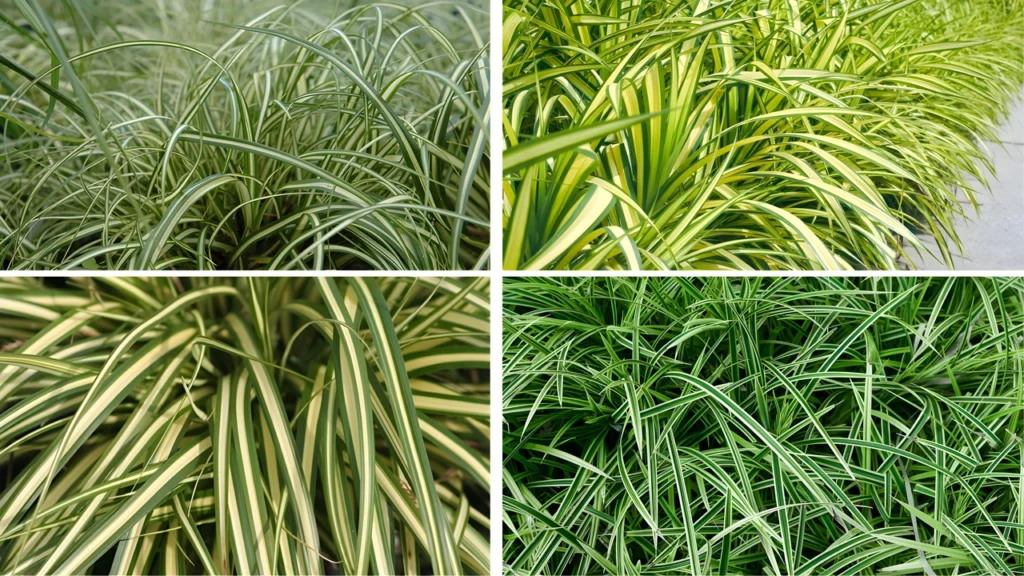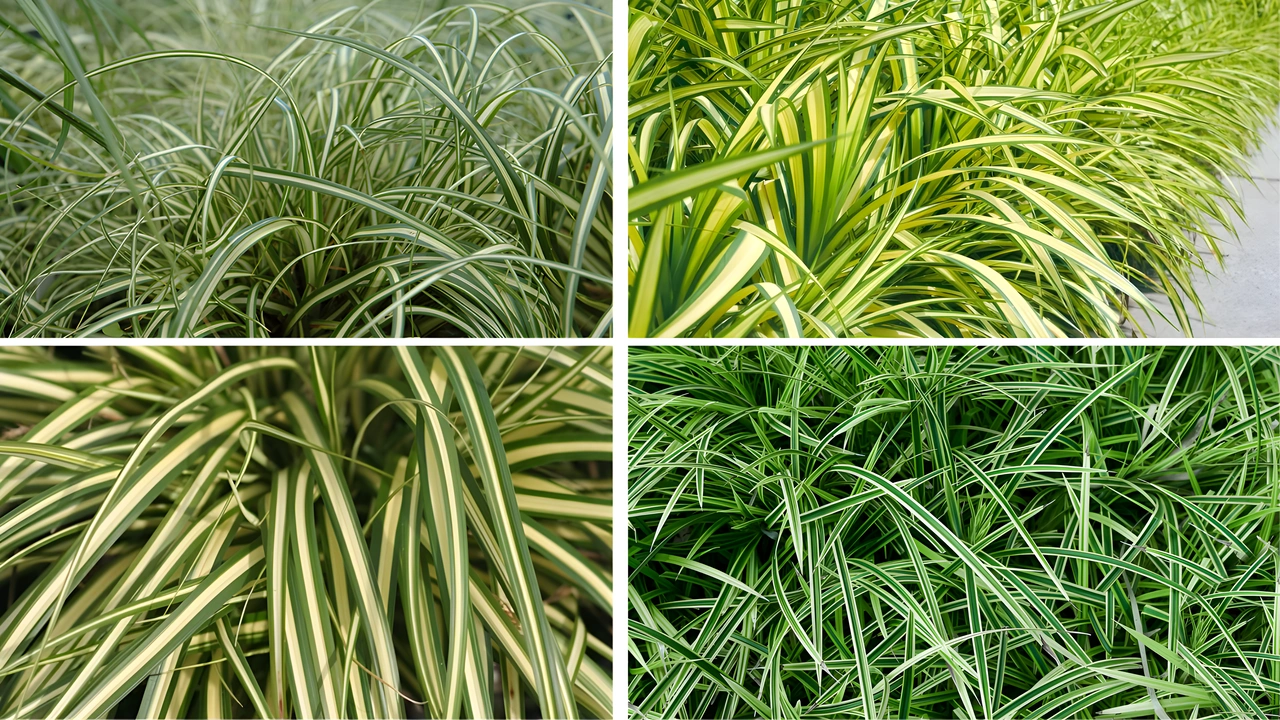Join on WhatsApp
Get the latest updates directly on WhatsApp – motivation, news & more!
Japanese sedge (Carex morrowii) is a versatile and attractive ornamental grass that adds texture and color to shade gardens and modern landscapes alike. Learning how to grow and care for Japanese sedge allows gardeners to harness its elegant form and low-maintenance qualities, making it an excellent choice for both novice and experienced gardeners. This detailed guide will cover all aspects of Japanese sedge cultivation, from planting tips and soil requirements to pruning, watering, and pest control. Whether you are aiming to create a lush ground cover or a striking border plant, mastering how to grow and care for Japanese sedge will help you achieve a thriving and beautiful garden.

Understanding Japanese Sedge and Its Growing Needs
To successfully grow and care for Japanese sedge, it is essential to understand the plant’s natural characteristics and preferences. Japanese sedge is a hardy perennial grass native to Japan and other parts of East Asia. It is prized for its slender, arching leaves that often have variegated or rich green hues, making it a visually appealing ground cover or accent plant.
The key to how to grow and care for Japanese sedge lies in providing the right conditions: this grass thrives in partial to full shade and prefers consistently moist, well-drained soil. It can tolerate a range of soil types but performs best in humus-rich, fertile soil. Knowing these basic needs ensures that your Japanese sedge will establish quickly and flourish.
Selecting the Right Location to Grow and Care for Japanese Sedge
Location plays a critical role in how to grow and care for Japanese sedge. Since Japanese sedge naturally grows in shaded or woodland environments, it is best suited for planting in areas of the garden that receive filtered sunlight or dappled shade. Avoid placing it in full sun, especially in hot climates, as this can cause leaf scorch and stress the plant.
When planning to grow and care for Japanese sedge, choose a spot with protection from harsh afternoon sun and strong winds. The plant’s preference for shade makes it an excellent choice for underplanting beneath trees, shrubs, or in shaded borders. Additionally, Japanese sedge can thrive in containers, making it a flexible option for patios or balconies that receive partial shade.
Soil Preparation and Planting Tips to Grow and Care for Japanese Sedge
Proper soil preparation is fundamental to how to grow and care for Japanese sedge. Begin by testing the soil to ensure it is well-draining but retains moisture. Japanese sedge does not like soggy conditions, so amending heavy clay soils with organic matter such as compost or peat moss will improve texture and fertility.
When planting Japanese sedge, space the plants about 12 to 18 inches apart to allow for natural spreading and airflow, which helps reduce disease risks. Dig holes slightly larger than the root ball, place the plants at the same depth they were growing in their pots, and backfill gently with soil. After planting, water thoroughly to settle the soil around the roots.
Watering and Fertilizing Practices for Growing and Caring for Japanese Sedge
Effective watering and fertilizing are critical parts of how to grow and care for Japanese sedge, ensuring vibrant foliage and steady growth. Japanese sedge prefers consistently moist soil but is not tolerant of waterlogged roots, so watering should be frequent during dry spells but moderated to avoid standing water.
For garden beds, applying a 2–3 inch layer of mulch around Japanese sedge helps retain moisture and regulate soil temperature, making watering more efficient. In container settings, monitor soil moisture more closely, as pots tend to dry out faster.
Fertilizing Japanese sedge once in early spring with a balanced slow-release fertilizer will promote healthy growth. Avoid excessive nitrogen, which can lead to overly lush foliage that is more susceptible to disease.
Pruning, Dividing, and Maintenance to Grow and Care for Japanese Sedge
Pruning and dividing are essential maintenance tasks when learning how to grow and care for Japanese sedge. Each spring, remove any dead or damaged leaves to keep the plant looking tidy and encourage new growth. Japanese sedge grows slowly, so pruning can also help maintain its shape and prevent it from becoming too dense.
Division is the best method to propagate Japanese sedge and rejuvenate mature clumps. Every 3 to 4 years, dig up the clump, separate it into smaller sections, and replant. This process prevents overcrowding and supports healthier growth, making it a key step in how to grow and care for Japanese sedge long-term.
Common Pests and Diseases to Watch for When Growing and Caring for Japanese Sedge
While Japanese sedge is relatively pest-resistant, understanding common issues can help you grow and care for Japanese sedge with confidence. The most frequent problems include fungal leaf spots and rust, especially if the plant is grown in poorly ventilated, damp conditions.
To prevent disease, ensure good air circulation by spacing plants correctly and avoiding overhead watering. If fungal issues arise, treat them promptly with appropriate fungicides or by removing infected foliage. Japanese sedge can also occasionally attract aphids or spider mites; regular inspection and natural remedies like insecticidal soap keep these pests under control.
Landscaping Uses and Design Ideas When Growing and Caring for Japanese Sedge
Knowing how to grow and care for Japanese sedge is not only about maintenance but also about maximizing its aesthetic potential. Japanese sedge’s graceful texture and shade tolerance make it perfect for a variety of garden designs.
Use Japanese sedge as a ground cover beneath taller shrubs and trees to soften borders and add year-round interest. Its variegated varieties can brighten darker garden corners. Japanese sedge also works beautifully in container arrangements with ferns and shade-loving perennials, providing contrast and lush foliage.
Table: Quick Care Guide to Grow and Care for Japanese Sedge
| Aspect | Recommendations |
|---|---|
| Light | Partial to full shade; avoid harsh afternoon sun |
| Soil | Moist, well-draining; amend heavy soils with compost |
| Watering | Keep soil consistently moist; avoid waterlogging |
| Fertilizing | Early spring application of balanced slow-release |
| Pruning | Remove dead leaves in spring; shape as needed |
| Division | Every 3–4 years to rejuvenate and propagate |
| Pests and Diseases | Watch for fungal leaf spots, rust, aphids, spider mites; promote airflow and treat promptly |
Conclusion: Mastering How to Grow and Care for Japanese Sedge for Beautiful Shade Gardens and Modern Landscapes
Successfully learning how to grow and care for Japanese sedge unlocks a world of possibilities for gardeners seeking elegant, low-maintenance grasses suitable for shade gardens and modern landscapes. By understanding the plant’s natural preferences for shade, moisture, and soil conditions, you can cultivate healthy, vibrant Japanese sedge that enhances the beauty and texture of your outdoor spaces. Through proper planting, watering, fertilizing, pruning, and pest management, this graceful grass can become a long-lasting feature in your garden or container display. Whether used as a lush ground cover, a border accent, or part of a mixed planting, mastering how to grow and care for Japanese sedge is a rewarding journey that brings subtle sophistication and reliable performance to your garden year-round.


